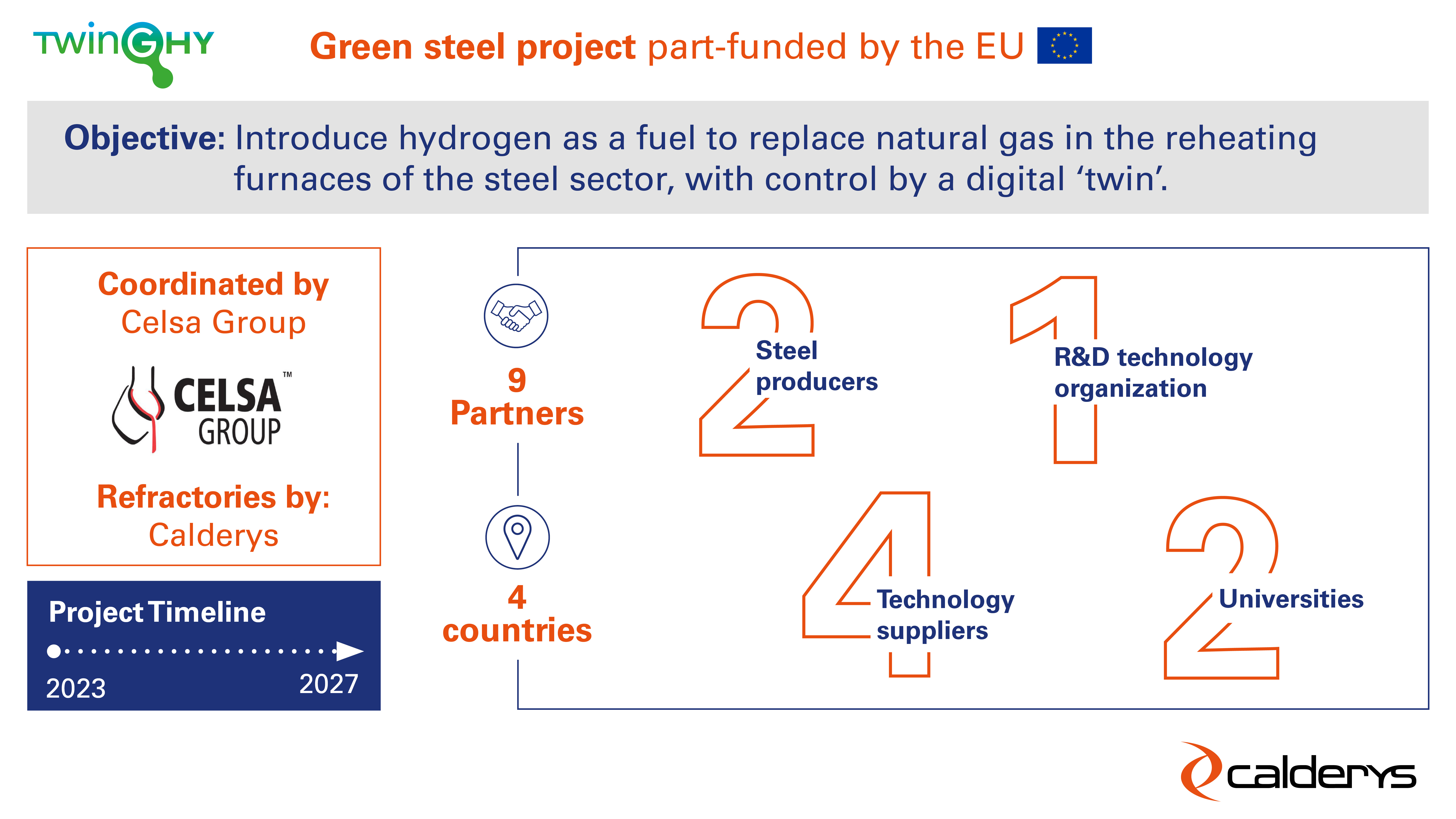The future of steelmaking: Green hydrogen
Green hydrogen is produced using industrial electrolysis, powered by electricity from renewable sources. The electrolysis process splits water molecules into hydrogen and oxygen, capturing and storing the hydrogen to be used as fuel.
However, introducing hydrogen as a fuel source in reheating furnaces isn’t completely straightforward, and some challenges need to be addressed, including:
- The cost and reliability of production: The process is energy intensive and the supply of renewable electricity must be cost-effective, consistent and reliable.
- Higher gas compression: Hydrogen requires more energy to compress than natural gas.
- Pipeline leakage and reactivity: hydrogen is the lightest and smallest molecule of all the elements and reacts differently to different metals, increasing the likelihood of leaks and corrosion.
Given these challenges, steelmakers may have to adapt their industrial processes. Calderys’ aim is to accompany customers as they reduce their carbon emissions. With our expertise and support, we play an important and strategic role in helping customers achieve their emissions goals with our high quality, efficient, and sustainable solutions.
Bruno Touzo, Global Vice President, Innovation & Technology Calderys, says “We’ll be involved in many more hydrogen projects, working towards the future of steelmaking in coming years, as the industry moves towards the EU’s targets for zero emissions. What we’re learning from our participation in the TWINGHY project will eventually bring operational and cost benefits - and sustainability, of course, to all of our customers, not just in Europe, but worldwide.”
Calderys is also participating in HYDREAMS, a project coordinated by French firm UGITECH, part of the Swiss Steel Group. HYDREAMS aims to remove carbon emissions from steel treatment thermal processes by using green hydrogen made from renewable energy sources. Its stated objective is full decarbonization of thermal processes for steel reheating and heat treatment by means of clean hydrogen oxyfuel combustion. The process will also improve the energy-efficiency of the thermal treatments, and simultaneously cut nitrogen oxide (NOx) emissions.
Learn more about the HYDREAMS project: https://calderys.com/news-and-media/calderys-proud-play-key-role-green-…


